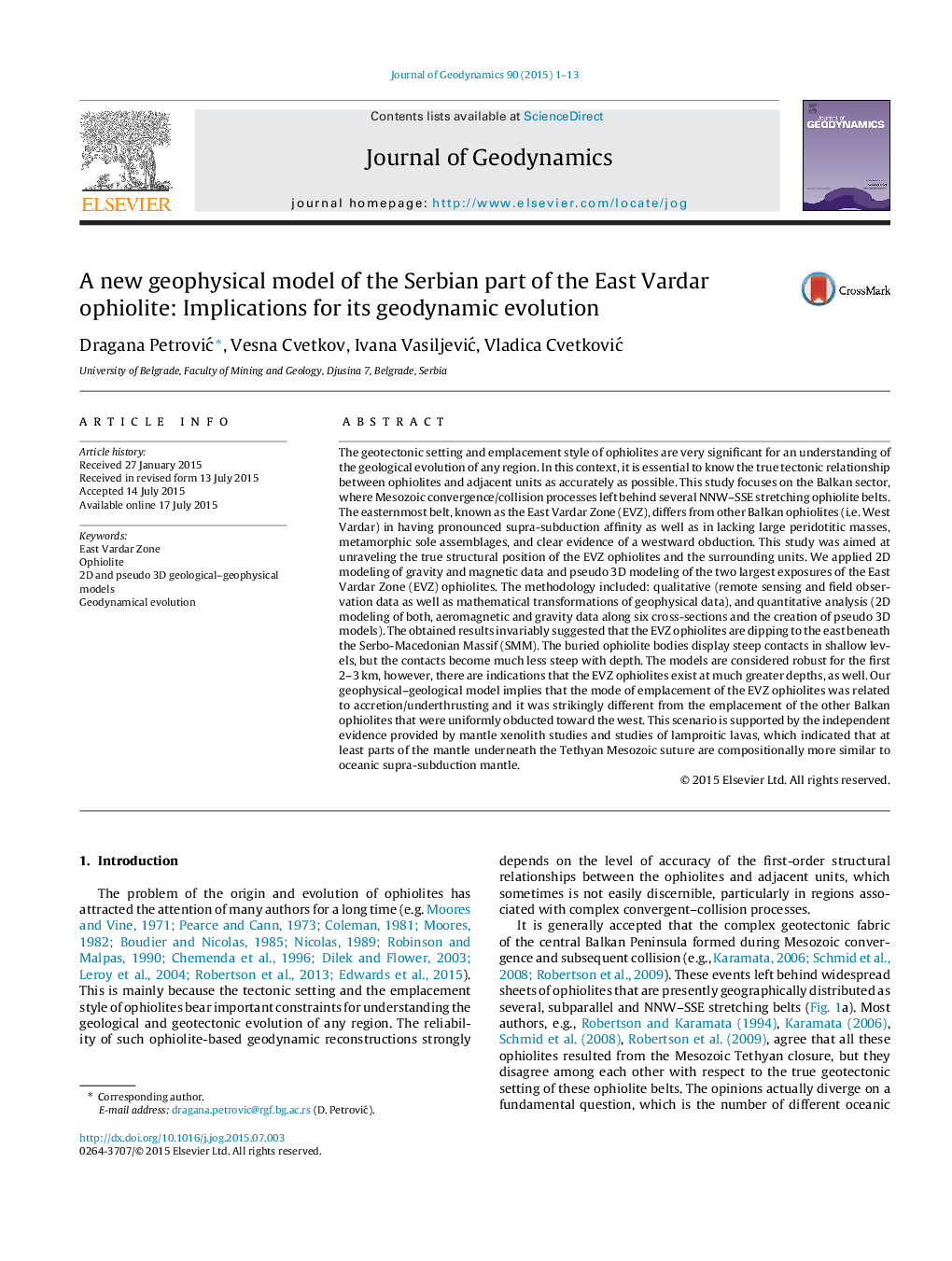| کد مقاله | کد نشریه | سال انتشار | مقاله انگلیسی | نسخه تمام متن |
|---|---|---|---|---|
| 4687970 | 1635759 | 2015 | 13 صفحه PDF | دانلود رایگان |
• 2D modeling of gravity and magnetic data along six cross-sections is applied.
• A pseudo 3D geological–geophysical model of the East Vardar Zone is created.
• Different emplacement mechanism for the western and eastern Tethyan ophiolites.
• Accretion scenario for the evolution of the East Vardar Zone ophiolites is proposed.
The geotectonic setting and emplacement style of ophiolites are very significant for an understanding of the geological evolution of any region. In this context, it is essential to know the true tectonic relationship between ophiolites and adjacent units as accurately as possible. This study focuses on the Balkan sector, where Mesozoic convergence/collision processes left behind several NNW–SSE stretching ophiolite belts. The easternmost belt, known as the East Vardar Zone (EVZ), differs from other Balkan ophiolites (i.e. West Vardar) in having pronounced supra-subduction affinity as well as in lacking large peridotitic masses, metamorphic sole assemblages, and clear evidence of a westward obduction. This study was aimed at unraveling the true structural position of the EVZ ophiolites and the surrounding units. We applied 2D modeling of gravity and magnetic data and pseudo 3D modeling of the two largest exposures of the East Vardar Zone (EVZ) ophiolites. The methodology included: qualitative (remote sensing and field observation data as well as mathematical transformations of geophysical data), and quantitative analysis (2D modeling of both, aeromagnetic and gravity data along six cross-sections and the creation of pseudo 3D models). The obtained results invariably suggested that the EVZ ophiolites are dipping to the east beneath the Serbo-Macedonian Massif (SMM). The buried ophiolite bodies display steep contacts in shallow levels, but the contacts become much less steep with depth. The models are considered robust for the first 2–3 km, however, there are indications that the EVZ ophiolites exist at much greater depths, as well. Our geophysical–geological model implies that the mode of emplacement of the EVZ ophiolites was related to accretion/underthrusting and it was strikingly different from the emplacement of the other Balkan ophiolites that were uniformly obducted toward the west. This scenario is supported by the independent evidence provided by mantle xenolith studies and studies of lamproitic lavas, which indicated that at least parts of the mantle underneath the Tethyan Mesozoic suture are compositionally more similar to oceanic supra-subduction mantle.
Journal: Journal of Geodynamics - Volume 90, October 2015, Pages 1–13
